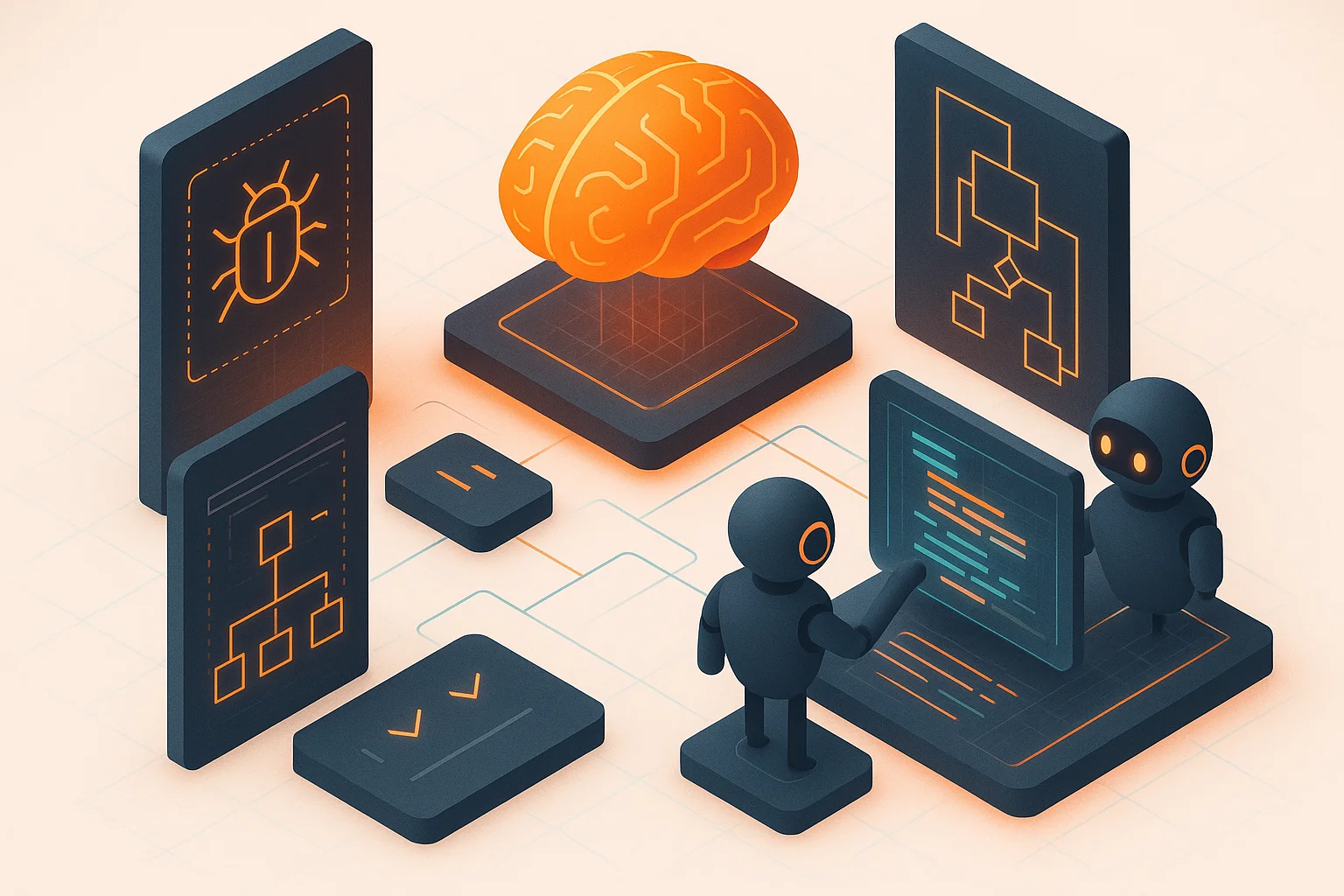AI-Powered Bug Fixing Tools: The Future of Enterprise Development 2025

Quick answer
Pair AI code review detection with autonomous fixers to eliminate the bulk of repetitive bugs. Propel identifies and prioritises defects; agents like Sweep, Codium, or Amazon Q fix them under human supervision. Enterprises that run this closed loop reduce mean time to resolution by 50–60% while maintaining strict compliance.
Bug fixing once meant triaging alerts, assigning owners, and waiting days for resolution. Today’s AI platforms find issues, propose patches, and run targeted tests autonomously. The challenge is orchestrating these tools without flooding reviewers or risking regressions.
End-to-end AI bug fixing blueprint
- Detection: Propel, Sentry, or Semgrep flag issues and classify severity.
- Assignment: Tickets route automatically to autonomous agents or engineers depending on risk.
- Autonomous fix: Agents (Sweep, Codium, Amazon Q) generate patches, updated tests, and documentation.
- Review & policy enforcement: Propel verifies tests passed, checks policy gates, and escalates to human reviewers for final approval.
- Post-merge validation: Observability dashboards confirm incidents drop and feed lessons back into prompts.
Tool landscape & fit
Detection platforms
- Propel: AI review + severity tagging, integrates with Sentry, Datadog, and CI findings.
- Semgrep AppSec, SonarCloud, and CodeQL for static analysis coverage.
- Honeycomb or Lightstep to catch performance regressions proactively.
Autonomous fixers
- Sweep AI for bugfix PRs in Python, TypeScript, and Go monorepos.
- Codium/Tabnine autopilot for language-agnostic fixes, especially small diffs.
- Amazon Q Code Transformation for Java upgrades and dependency remediations.
Propel keeps humans in control
- Scores every automated fix with risk signals (test coverage, blast radius, policy hits).
- Blocks merges until reviewers approve must-fix issues or overrides are documented.
- Aggregates post-merge incidents to train future agent prompts.
- Provides ROI dashboards showing bugs prevented, time saved, and cost per fix.
Guardrails for safe automation
- Require reproducible failing tests or logs before triggering autonomous fixers.
- Create allowlists/denylists of directories agents may modify.
- Run targeted integration tests in CI and capture diffs for reviewer context.
- Log every agent action for compliance; Propel retains this audit trail automatically.
Measuring success
Speed
Mean time to resolve, queue length, and percentage of incidents closed within SLA.
Quality
Regression rate after automated fixes and reviewer acceptance percentages.
Cost
Engineer hours saved, tool spend by repository, and cost per resolved bug.
FAQ: AI bug fixing in enterprises
How much should we automate before involving humans?
Automate detection and suggested fixes, but keep humans as final approvers. Propel ensures every merge has an accountable reviewer and logs overrides for audits.
Can autonomous fixers handle security vulnerabilities?
Yes for known CVEs and dependency upgrades. For business logic flaws, route the fix to an engineer but let AI gather context, craft patches, and write regression tests.
How do we avoid “merge sprawl” from agent-generated PRs?
Throttle the number of concurrent agent PRs, batch similar fixes, and use Propel to group low-risk patches into a single review.
Ready to Transform Your Code Review Process?
See how Propel's AI-powered code review helps engineering teams ship better code faster with intelligent analysis and actionable feedback.


